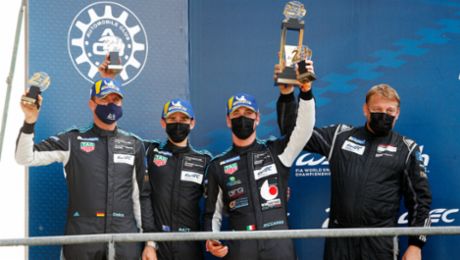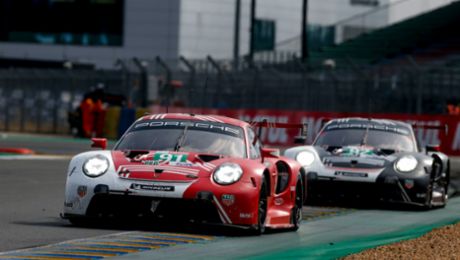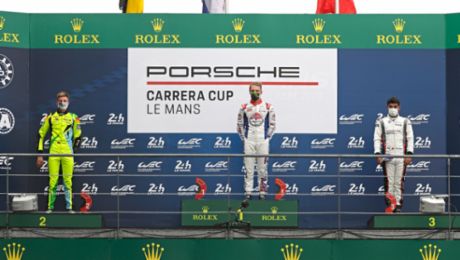The race
As the best Porsche, the No. 31 entry fielded by Frikadelli Racing with works driver Mathieu Jaminet (France), Germany’s Lars Kern and Lance David Arnold, as well as Maxime Martin from Belgium, achieved seventh place. The No. 25 car campaigned by Huber Motorsport and driven by Patrick Kolb, Marco Holzer, Nico Menzel (all Germany) and Lorenzo Rocco di Torrepadula (Switzerland) won the separate Pro-Am category in the GT3 class.
Constantly changing weather conditions with at times torrential rain caused the race director to halt the long-distance classic for almost nine hours during the night. Even before the start, the sports car manufacturer faced an onerous task: After three people in the Le Mans 24 Hours team tested positive for Covid-19, Porsche Motorsport excluded all employees who had worked at the French classic from travelling to the Nürburgring as a precautionary measure. This also affected the drivers with a works contract. As a result, new crews had to be found at short notice for almost all 911 GT3 R. Manthey-Racing’s cult-car, dubbed “Grello” by fans, was unable to contest the Nürburgring season highlight.
#24hNBR - Checkered flag @24hNBR #nring #Nordschleife. The #Porsche #911GT3R have crossed the finishing line:
— Porsche Motorsport (@PorscheRaces) September 27, 2020
🅿️07 #31 @Frikadelli_R
🅿️10 #44 @FalkenTyres
🅿️11 #33 @FalkenTyres
🅿️13 #18 @KCMotorgroup
🅿️15 #25 #HuberMotorsport
🅿️17 #30 @Frikadelli_R pic.twitter.com/uiqtqbh6mB
After a Top Qualifying of mixed fortunes, Porsche’s top models for customer sport swiftly advanced through the field. Facing intermittent rain, which became increasingly heavier, the two racing cars fielded by KCMG in particular quickly made up ground. By the time the red flag came out at around 11.15 pm, the No. 18 car of the two brand ambassadors Timo Bernhard and Jörg Bergmeister (both Germany), the works driver Earl Bamber (New Zealand) and Norway’s Dennis Olsen, had reached fifth place. The No. 19 sister car of the double-starter Olsen, Josh Burdon (Australia), Alexandre Imperatori (Switzerland) and Edoardo Liberati (Italy) was in ninth position at the restart. Behind them lay the No. 31 entry of Frikadelli Racing. At this point, five 911 GT3 R were still running on the same lap as the leader.
When the race resumed at 8 am, the top-placed Porsches continued their pursuit race. Olsen even managed to make it to third place with the No. 18 car, only to be thrown out of the top ten by an unfortunate choice of tyres, a pit stop penalty and, last but not least, a collision while lapping another vehicle. This sister car had to retire after making contact with a slower competitor. This put the No. 31 nine-eleven of Frikadelli Racing at the spearhead: Jaminet brought the racer over the line in sixth place, however, a retrospective one-minute time penalty cost more positions. Positions ten and eleven went to the two 911 GT3 R campaigned by Falken Motorsports, each with Klaus Bachler (Austria) and works driver Sven Müller (Germany) at the wheel. The pair shared the cockpit of the No. 44 contender with Peter Dumbreck (Great Britain) and Martin Ragginger (Austria). In the No. 33 car, they were joined by works driver Dirk Werner and Christian Engelhart (both Germany).

Comments about the race
Sebastian Golz (Project Manager Porsche 911 GT3 R): “The ADAC Nürburgring 24-hour race – that was an emotional rollercoaster for everyone involved. Punctures, penalties and the not always correct tyre choice led to a fight for the lead in a race that was simply not meant for us. Anything can happen in the ‘Green Hell’ and it hit us hard this year. Still, we’re delighted with Huber Motorsport’s first place in the Pro-Am category. That gives us extra motivation to fight for victory again next year.”
Earl Bamber (Porsche 911 GT3 R #18): “Halfway through the race, we were really strong, but this is not the result that we’d imagined. Making contact with the other competitor cost us two laps. The car and the team put in a strong performance, but we were slightly lacking under the mixed conditions. We want to return next year and do everything better. Thank you to everyone who made this campaign possible for me at such short notice.”
Timo Bernhard (Porsche 911 GT3 R #18): “That was a very wild race under incredibly difficult conditions. At times we managed to underline our good form. Obviously, the result is not what we’d hoped for, or what would have been possible. Ultimately, it was important to finish. I think we also helped Porsche out well. In any case, it was again great fun.”
More comments in the press release.
Results
1. Sims/Catsburg/Yelloly/Eng (GB/NL/GB/A), BMW M6 GT3 #99
2. Bortolotti/Frijns/Haase/Winkelhock (I/NL/D/D), Audi R8 LMS GT3 #3
3. Farfus / Klingmann / Tomczyk / Van der Linde (BR/D/D/ZA), BMW M6 GT3 #42
...
7. Arnold/Kern/Jaminet/Martin (D/D/F/B), Porsche 911 GT3 R #31
10. Bachler/Ragginger/Dumbreck/Müller (A/A/GB/D), Porsche 911 GT3 R #44*
11. Engelhart/Müller/Werner/Bachler (D/D/D/A), Porsche 911 GT3 R #33
13. Bamber/Bergmeister/Bernhard/Olsen (NZ/D/D/N), Porsche 911 GT3 R #18
15. Menzel/Holzer/Kolb/Rocco di Torrepadula (D/D/D/I), Porsche 911 GT3 R #25
DNC Abbelen/Müller/Renauer/Siedler (D/D/D/A), Porsche 911 GT3 R #30
Interim report 2
The Porsche Motorsport customer teams have made a good start after the restart of the Nürburgring 24-hour race. During his first stint, Norway’s Dennis Olsen initially battled his way up to third place. He shares KCMG’s 911 GT3 R No. 18 with Porsche ambassador Timo Bernhard as well as Jörg Bergmeister (both Germany) and works driver Earl Bamber (New Zealand). The vehicle, however, was given a 32-second penalty due to a pit stop error. Frikadelli Racing’s No. 31 Porsche driven by Maxime Martin (Belgium) and Lance David Arnold (Germany) has also moved up into the first five. At the restart they were running in tenth place and are supported by Porsche works driver Mathieu Jaminet (France) and Lars Kern (Germany).
The endurance classic had to be halted at around 11.15 pm due to heavy rain. At 8 am on Sunday morning, all seven 911 GT3 R began turning their laps again on the still-wet 25.378-kilometre combination of the Grand Prix circuit and the Nordschleife. By 11.30 am and with four hours remaining on the clock, five of them are still running within the same lap as the leader. But then the No. 19 vehicle was involved in an accident while lapping another vehicle and had to retire.
#24hNBR - The #Porsche customer teams have made a good start after the restart @24hNBR @nuerburgring. During his first stint, Norway’s @Olsen_Dennis initially battled his way up to third place.
— Porsche Motorsport (@PorscheRaces) September 27, 2020
Further informations and free downloads ⬇️https://t.co/u8TmV3vlLn pic.twitter.com/tFOXKpyG1H
Comments with four hours to go
Sebastian Golz (Project Manager Porsche 911 GT3 R): “After the restart, Dennis Olsen and Maxime Martin put in a strong stint. When the weather changed, we didn’t find the optimal tyre and air pressure combination and lost a lot of time in the second stint. Now we have to pull out all stops and push everyone involved to the limit. The name of the game at a 24-hour race is to survive the 24 hours. Anything can happen in the ‘Green Hell’.”
Dennis Olsen (Porsche 911 GT3 R #18): “Things went really well for us after the restart. I made up places and moved into third on the drying track. During the pit stop, we decided we didn’t want to take any risks so we opted again for the full wet tyres. Unfortunately, that was the wrong choice at that point and we lost a bit of time. Now we’re back on the right racing and tyre strategy.”
Maxime Martin (Porsche 911 GT3 R #31): “The first stint was good, despite the tough competition out there on the track. Our Porsche ran perfectly. We had a decent pace and I was able to catch the leaders and make up positions. However, we mounted the wrong tyres during the pit stop and lost ground again. That’s how it goes sometimes in racing. My apologies again for nudging the No. 19 Porsche.”
Dirk Werner (Porsche 911 GT3 R #33): “The restart of the race was rather unspectacular for me, but difficult despite the predictable conditions. At first, I didn’t have any grip and slid around a lot. That’s why I couldn’t maintain the pace. Initially, the Nordschleife was totally wet, then there was less and less water on the track.”
#24hNBR - Latest news from the @24hNBR race director: The race will re-start at 8:00 local time on #Nürburgring #Nordschleife after one safety car round. The race will end at 15:30 #Porsche #911GT3R pic.twitter.com/SqxWXpHJER
— Porsche Motorsport (@PorscheRaces) September 27, 2020
Interim report
The Nürburgring 24-hour race was stopped after a little more than seven hours due to heavy downpours and too much water on the racetrack. Until this point, Porsche’s customer teams made the most of the difficult weather conditions to advance up the field: all seven of the 911 GT3 R racers are still in the contest despite multiple incidents on the track. The two KCMG vehicles are running in the top ten, with the No. 18 entry driven by Porsche ambassador Timo Bernhard as well as Jörg Bergmeister (both Germany), works driver Earl Bamber (New Zealand) and Dennis Olsen (Norway) on fifth place. The No. 19 sister car shared by double-starter Olsen, Josh Burdon (Australia), Alexandre Imperatori (China) and Edoardo Liberati (Italy) is on ninth. Directly behind them is the best Frikadelli Racing vehicle crewed by works driver Mathieu Jaminet (France), Lars Kern, Lance David Arnold (both Germany) and Maxime Martin (Belgium). Four other 911 GT3 R are among the top 21 as they wait for the race to resume. Porsche expects the heaviest rain to arrive around midnight.
Comments after six hours
Sebastian Golz (Project Manager Porsche 911 GT3 R): “Our two major tasks are to keep the cars on the track and choose the right tyres for the conditions. Our competitors’ lap times are very strong, but the balancing act we’ve seen until now has been between being fast and losing the car. We managed to advance up into the top ten and that was a huge step: We started with traffic all around us in the rain and, at times, the competitors had to drive with virtually zero viz in the spray.”
Timo Bernhard (Porsche 911 GT3 R #18): “During my stint, I ended up fighting among a pack of four or five cars. That was cutthroat. I tried to find my rhythm, and ultimately my speed was pretty good. Unfortunately, I also had a little tête-à-tête: I wanted to overtake but the driver in front didn’t see me. In my attempt to avoid contact I slid to the inside. Something like that shouldn’t happen, it was my fault. The race is still long and we’re heading into a long night. We have to keep cool, especially in such weather conditions, because, when it rains, you’re often just a passenger on the Nordschleife. Still, our driver crew is strong, we have a great team and the Porsche feels fantastic.”
Jörg Bergmeister (Porsche 911 GT3 R #18): “In my first 90-minute stint I was the fastest car on the track at times and managed to make up ground – not bad for a retired person. But the conditions will not get easier. That’s just how the Eifel lives and breathes!”
Dennis Olsen (Porsche 911 GT3 R #19): “A good first double stint! We started from P22 and managed to plough through the field. The Porsche feels terrific in the rain, and the race started well for us. I’ll take a double break now and then jump back into our No. 18 car for another double stint.”
Nico Menzel (Porsche 911 GT3 R #25): “That was one of the most exhausting double stints I’ve ever driven. I started on used tyres because we’d taken the punt on a drying track. Then it started to rain again, which didn’t make my life any easier. I drove eight laps as if on ice. Things improved a lot once we’d fitted new tyres, and I was able to make some progress. But lap to lap the conditions keep changing from a drying track to torrential downpours.”
Klaus Abbelen (Porsche 911 GT3 R #30): “I’ve never experienced such a difficult stint. There are probably no ideal tyres for such conditions, and then the big oil spill on top – catastrophic. The tyres were so smeared that I couldn’t get them clean any more so I only drove seven laps – without hitting anything.”
Mathieu Jaminet (Porsche 911 GT3 R #31): “That was a tough and difficult double stint. In the first run, I raced on wet tyres and struggled with a lack of grip. What’s more, a vehicle spilled a lot of oil. Sometimes I was close to losing the car but luckily managed to keep it on the track. In the second stint, we mounted the so-called ‘drying-wet’ rubber. That was the right choice – until rain set in again...”
Maxime Martin (Porsche 911 GT3 R #31): “That was a bit tricky, but the race started out well for us. I could hardly see in the spray. The Porsche felt really good, but we then experienced some minor problems with the tyres. Now we can attack even harder.”
Christian Engelhart (Porsche 911 GT3 R #33): “I actually had a lonely stint without seeing another GT3 car the whole time, so I was able to find my rhythm. Initially, I struggled with the tyres. It was difficult getting them up to temperature. The less water there was on the racetrack, the better it got. Under these difficult conditions, the drivers are generally behaving themselves. Let’s see what the night brings.”
Martin Ragginger (Porsche 911 GT3 R #44): “It was important for me to get accustomed to the 24-hour race as quickly as possible. Because the track was constantly going between wet and damp, the pace kept changing. Our Porsche is running well. Although there aren’t as many cars competing, a couple of overtaking situations cost me a lot of time. The conditions are tough. I focused on finding a good speed and on not making any mistakes.”
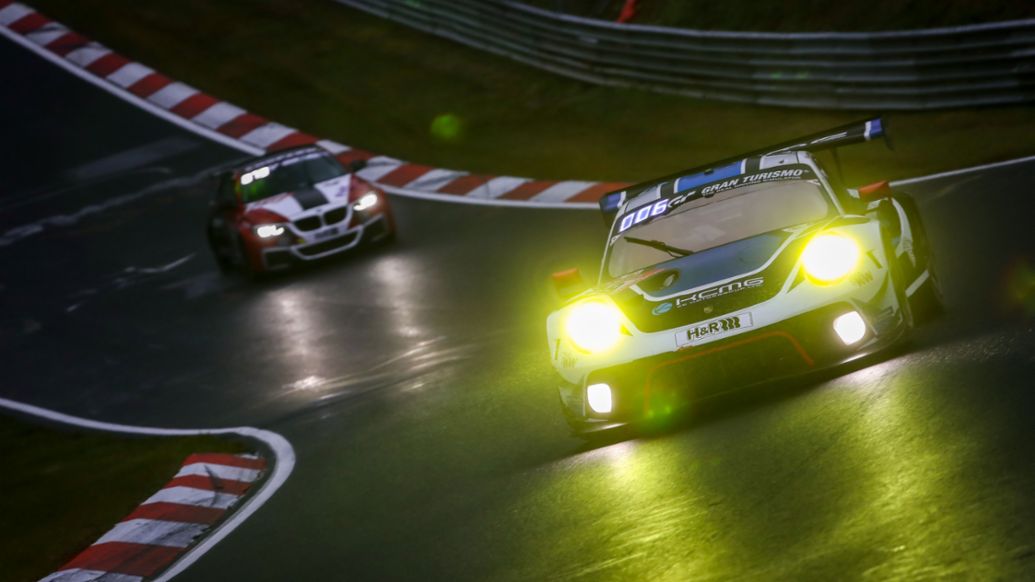
The Qualifying
Porsche has made it into the new Top Qualifying for the 24-hour race at the Nürburgring, which is limited to 30 vehicles, with all seven customer-run 911 GT3 R racers. In the first heat of the two-part final qualifying session, Dennis Olsen achieved second in the individual time trial with the 911 fielded by the KCMG squad. Facing very difficult track conditions with rain setting in, he made the best use of the first of his two laps and missed out on topping the timesheets by a mere quarter of a second. This allowed the Norwegian to take part in the second qualifying segment. However, he had to park the vehicle, which he shares with Timo Bernhard, Jörg Bergmeister (both Germany) and Earl Bamber (New Zealand) due to problems during the warm-up lap. As the best-placed 911 GT3 R, Frikadelli Racing’s No. 30 entry heads into the 24-hour race on Saturday at 3.30 pm local time from P14. Sharing the cockpit are qualifying driver Alex Müller (Germany), Klaus Abbelen, Robert Renauer (both Germany) and Norbert Siedler (Austria). The Porsche, which contests the Pro-Am class, had already made it into the top-17 session after scoring good results in the Nürburgring Endurance Series (NLS).
#24hNBR - #Porsche has made it into the new Top Qualifying for the @24hNBR, which is limited to 30 vehicles, with all seven customer-run #911GT3R racers.
— Porsche Motorsport (@PorscheRaces) September 25, 2020
Qualifying report and free downloads ⬇️https://t.co/e4esvD3bV6
A few days before the Nürburgring season highlight, Porsche had completely reorganised its works driver line-up after three positive Covid-19 routine tests of team members at the 24 Hours of Le Mans. As a result, the two Porsche brand ambassadors Timo Bernhard and Jörg Bergmeister, as well as Earl Bamber, had to step in at short notice to drive the KCMG-911 GT3 R. Bamber was supposed to contest the IMSA race for Porsche in Mid-Ohio this weekend. As the five-time overall winner at the Nürburgring, Timo Bernhard is one of the most successful drivers at this 24-hour race. He also holds the lap record on the Nordschleife after setting a time of 5:19.546 minutes with the Porsche 919 Hybrid Evo. Like Bamber, the 2017 World Endurance Champion has won Le Mans twice. The quartet underlined what they are capable of by setting the fourth fastest lap in today’s first practice. Given the changeable conditions in the following two sessions, their time guaranteed them entry into the first Top Qualifying segment.
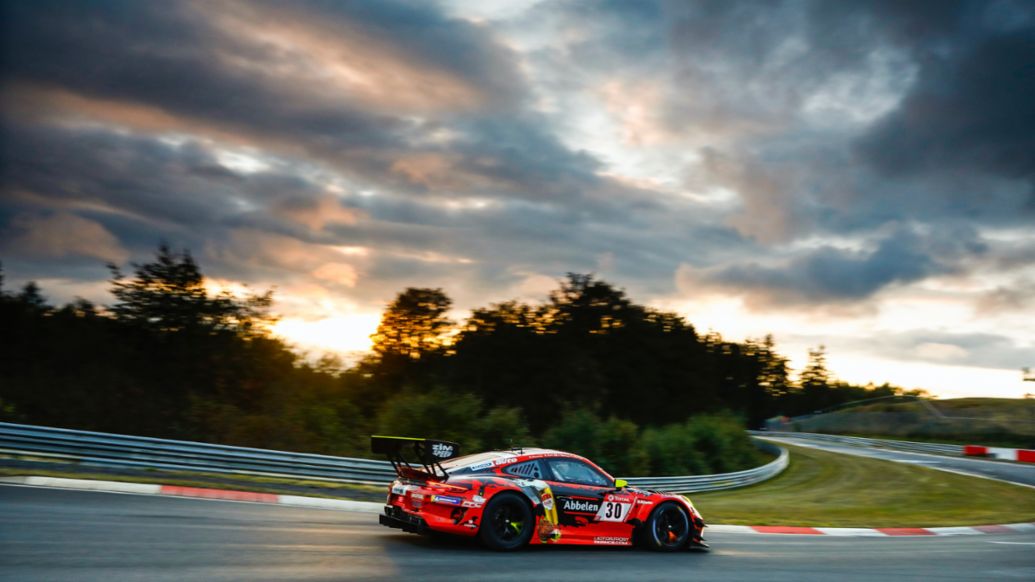
Comments on the Top Qualifying
Sebastian Golz (Project Manager Porsche 911 GT3 R): “The qualifying didn’t quite go as we’d anticipated. Dennis Olsen managed to set an extremely strong time in the first run and we were confident that it would also go very well in the final attempt. Unfortunately, a technical hiccup hampered Dennis’ charge – we need to take a closer look at this. Despite the wet tyres, Alex Müller clocked a decent time with 14th in the Frikadelli-Porsche.”
Alexander Müller (Porsche 911 GT3 R #30): “We went out on a drying track with full-wet tyres because we had no experience with the drying-wet rubber, and it would probably have been too cool for them. It worked with the wet tyres, but unfortunately, we messed up the air pressure. The track was drier than expected. We could’ve achieved a better grid spot. Still, we’re feeling confident. We have a long race ahead of us and we’re starting relatively far up the Pro-Am grid – that’s our goal.”
Dennis Olsen (Porsche 911 GT3 R #18): “The first Top Qualifying heat went very smoothly despite the difficult conditions. We opted for wet tyres, which worked well. As the second-fastest, I got into the second Top Qualifying. I was certain I would be able to go for the best lap times. We chose regrooved slicks, because we thought this was the best option. Unfortunately, in the middle of the warm-up lap, there was a problem and I had to let the car roll to a stop.
More comments in the press release.
The current Porsche racing cars
When more than 100 racing cars take off into the 24-hour adventure through the ‘Green Hell’ on Saturday at 3.30 pm, one marque, in particular, will stand in the spotlight: Porsche. Almost a third of the participating vehicles bear the crest of the sports car specialists from Stuttgart-Zuffenhausen. No other brand is more strongly represented. More precisely, 30 Porsche 911 and Cayman model series are expected to line up on the grid on Saturday. The range of versions and variants is broad – from the full-bred GT3 racers fighting for overall victory at the endurance classic through to the near-standard racing vehicle in the production car class. Most vehicles are based on current models – proof once again that every Porsche is a sports car. Here is an overview of the most important types and variants from clubsport to thoroughbred racing machines.
Porsche 718 Cayman S (V3T and SP4T classes)
A flat-four engine with a 2.5-litre displacement and modern VTG turbocharger with variable turbine geometry: The 718 Cayman S (Fuel consumption combined 9.6 – 8.8 l/100 km; CO2 emissions 218 – 200 g/km) two-seater has long been popular at the Nürburgring-Nordschleife as the entry-level endurance racing car for amateurs. Teams carry out the conversion to the racing cars themselves. In order to keep costs reasonable, very few modifications are permitted to the engine, suspension and brake system. In the near-standard V3T class, the kerb weight correlates to the engine output of the baseline product. For example, ex-works, the 718 Cayman S must weigh 1,475 kilograms ready to race – which means an extra weight of more than 100 kilograms. The aero-kit must be the same as in the production model. This limits the possibilities to the extendable rear spoiler. This has enabled the rear-wheel-drive car, which ideally features the Porsche PDK dual-clutch transmission for the storied 25-kilometre long racetrack, to set a curious record: In keeping with the regulations, the near-standard 718 Cayman S is slightly handicapped by its higher racing weight, the lack of downforce in the corners as well as under braking. However, on the 2.6-kilometre Döttinger Höhe, it is one of the fastest in terms of its top speed of over 280 km/h. This is reflected in the list of results: In terms of potential, on top of a class win, the V3T variant of the Cayman S can clinch the production car overall classification.
Same car, different division: the four-cylinder 718 Cayman is a winner in the SP4T class, as well. SP stands for “24h special” and indicates the greater freedom that the technical regulations allow in the design and running of the sports car. Aerodynamic aids such as a larger rear wing and a modified front apron support the cornering and braking performance of the SP4T variant, which is significantly lighter at 1,170 kilograms. The performance of turbocharged engines can be increased, but then the boost pressure is limited to 2.4 bar and a 38-mm air-restrictor becomes mandatory. Alternatively, to cut costs, this racing vehicle can also compete as “vehicles with a near-standard engine” in accordance with the VLN production vehicle regulations.
Porsche 718 Cayman GT4 Clubsport (Cup 3 class)
In January 2019, Porsche unveiled the successor to the first Cayman GT4 Clubsport: The 718 Cayman GT4 Clubsport represents a consequent further development of the successful model from the Weissach/Flacht Motorsport Centre. In developing the new 718 Cayman GT4 Clubsport, the focus was put not only on further improved driveability and faster lap times but also on the sustainable use of raw materials. The 718 Cayman GT4 Clubsport is the first-ever series-production racing car to feature body parts made of natural-fibre composite material. The driver and co-driver doors and the rear wing are made of an organic fibre mix, which are sourced primarily from agricultural by-products such as flax or hemp fibres and feature similar properties to carbon fibre in terms of weight and stiffness. It races at the Nürburgring Endurance Series (NLS) – alongside its predecessor – in its own category: the Cayman GT4 Trophy by Manthey-Racing.
Powering the 718 GT4 Clubsport is a 3.8-litre flat-six engine. Compared to its predecessor, this represents a 40-hp increase in performance. The power is transferred to the rear wheels via a Porsche dual-clutch gearbox with six gears and mechanical rear axle differential lock. The lightweight spring-strut front suspension is taken from the 911 GT3 Cup. The impressive racing brake system features steel brake discs all round measuring 380-millimetres in diameter. The 718 Cayman GT4 Clubsport is delivered ex-works with a welded-in safety cage, a racing bucket seat with a six-point harness, a FIA escape hatch in the roof as well as an automatic fire extinguisher. Tipping the scales at 1,315 kilograms, the 718 Cayman GT4 Clubsport counts as one of the lightweights.
In the Cup 3 class, the “Competition” version developed specifically for national and international races, competes. This model features a safety fuel tank with a capacity of 115 litres that is also suitable for long-distance events. Thanks to a brake balance system, the balance bias can be infinitely adjusted between the front and rear axle. An integrated air jack system guarantees fast pit stops. The quick-release racing steering wheel adopted from the 911 GT3 R (Fuel consumption combined 13.2 l/100 km; CO2 emissions 303 g/km)ensures a range of adjustment options for the individual needs of the drivers. Moreover, an additional safety package is mandatory for this class.
Porsche 718 Cayman GT4 Clubsport MR (SP10 class)
The special MR variant of the 718 Cayman GT4 Clubsport Competition is even more competitive, which is underlined by three-way adjustable shock absorbers, among other features. MR stands for Manthey Racing. The Porsche factory and development team from Meuspath near the Nürburgring has designed and homologated a special GT4 kit for the mid-engine racing car, which is a prerequisite for competing in the SP10 class. Lighter carbon panels replace the front and rear aprons, the fenders, front hood and boot lid. The front and rear windows are made of polycarbonate, the aerodynamic diffuser and front splitter are made of natural-fibre composite materials. The engine and transmission remain untouched, but the chassis is adapted and a set of lighter BBS wheels are fitted. Performance and racing weight depend on the respective Balance of Performance classification.
Porsche 911 GT3 Cup (SP7 class)
In addition to the Porsche Mobil 1 Supercup as well as Porsche’s national Carrera Cups and GT3 Cup Challenges, 911 GT3 Cup (991.2 model generation) has been fielded with success at the Nordschleife of the Nürburgring since 2018. The rear houses a four-litre, six-cylinder flat engine for powerful propulsion. Thanks to thoroughbred motorsport technology, the compact engine with direct fuel injection delivers a peak performance. Aside from sheer power, a raft of innovative solutions ensure efficiency, even better durability under racing conditions, as well as reduced maintenance costs. A valve drive with rigidly mounted rocker arms and a central oil feed is used for the very first time. An integrated oil centrifuge is used to optimise oil defoaming in the engine. A crankshaft with significantly increased rigidity has also been installed.
A new front apron and a new rear end improve the downforce of the 911 GT3 Cup compared to the predecessor model, thus enhancing traction and performance. The prominent 184-centimetre-wide rear wing has been retained from the predecessor model. One-piece 18-inch racing rims with a central locking mechanism are used – with 270-millimetre racing slicks on the front axle and a massive 310-millimetre tread on the rear axle. The intelligent aluminium-steel composite construction ensures maximum rigidity and a lightweight body. Ready to race, the 911 GT3 Cup weighs in at just 1,200 kilograms, however for the 24-hour race at the Nürburgring, it must weigh 1,250 kilograms as required by the classification.
During the car’s development, the engineers put special emphasis on driver safety. The driver is protected by a massive safety cell and an innovative, bucket-style racing seat that is moulded around the head and shoulder area in particular. The rescue hatch in the roof complies with the latest FIA standard.
Porsche 911 GT3 Cup MR (SP-Pro class)
Manthey-Racing also offers an even sharper version of the 911 GT3 Cup of the 991.2 model generation. The Cup MR features a lightweight carbon kit, including the underbody as well as a three-way adjustable racing suspension and five-channel ABS from Bosch in MR spec. The MR rear wing measures 1,600 mm in width so that the vehicle can compete in the SP7 class. As the next configuration level, the Cup MR Pro variant receives a 1.8-metre-wide rear wing as well as a larger front splitter with additional flics, i.e. aerodynamic attachments for the front apron. The tread is slightly wider on the front axle measuring 30/68-18. In this version, the 911 GT3 Cup belongs in the SP-PRO class – as does the MR SP-PRO Cup. It is distinguished by an MR traction control and an anti-lift system. Last but not least, depending on the BoP classification, the engine output of the four-litre flat-six engine is boosted.
Porsche 911 GT3 R (SP9 class)
Since the 2019 season, customer teams have fielded the latest Porsche 911 GT3 R in international and national series – with outstanding success. The customer sport racer from Weissach won, amongst others, the Spa-Francorchamps 24-hour race and at the return of the sports car scene in Kyalami, South Africa. Thanks to these successes, the 911 GT3 R also secured the title in the hotly-contested Intercontinental GT Challenge. The vehicle also claimed class victory at the 24-hour race on the Nürburgring in 2019.
Using the 911 GT3 RS (Fuel consumption combined 13.2 l/100 km; CO2 emissions 303 g/km) production sports car, which was launched in March 2018, as a baseline, Porsche designed a spectacular customer racer for GT3 series around the world. During its development, special attention was paid to particularly efficient aerodynamics, improved driveability, further optimised safety as well as lowering the cost of servicing and spare parts.
Powering the 911 GT3 R is a cutting-edge four-litre flat-six unit which is largely identical to the high-performance production engine of the road-legal 911 GT3 RS. Depending on the Balance of Performance classification. Direct fuel injection, which operates at pressures up to 200 bar, as well as variable valve timing adjustments of the intake and exhaust camshafts ensure a particularly efficient use of fuel. Moreover, compared to its predecessor, the normally-aspirated engine offers significantly better driveability and a broader usable rev range.
A Porsche sequential six-speed constant-mesh gearbox transfers the power to the 310-mm-wide rear wheels. The electric shift drum actuator ensures particularly fast and precise gear changes. As in the GT road-going models, the driver changes gears via shift paddles conveniently positioned on the steering wheel. The clutch is electro-hydraulically controlled, which eliminates the need for the clutch pedal and assists quick race starts. Typical of the 911, the weight distribution ensures excellent traction and braking performances.
The lightweight body design of the 911 GT3 RS production sports car featuring intelligent aluminium-steel composite construction has proven to be the ideal basis for the near-production racing car. The roof, front hood and fairing, wheel arches, doors, side and tail sections as well as the rear lid and interior trim are made of particularly light carbon-fibre composite material (CFRP). All windows consist of polycarbonate. The spectacular aerodynamics of the 911 GT3 R also follows the example of the road car. The distinctive wheel arch air vents on the front fairings increase downforce at the front axle. Measuring 1,900 millimetres in width by 400 millimetres in depth, the rear wing lends aerodynamic balance. The tyre size at the front axle has grown from 650 to 680 millimetres. In tandem with the new Porsche double wishbone suspension, this ensures superior braking performances and consistency over the duration of the race.
The optimised brake system of the 911 GT3 R offers increased stiffness and more precise control of the ABS. At the front axle, six-piston aluminium monobloc racing brake callipers combined with ventilated and grooved steel brake discs with a diameter of 390 millimetres ensure outstanding braking performances. Fitted at the rear axle are four-piston callipers and discs measuring 370 millimetres.
Seven 911 GT3 R take up the challenge at this year’s Nürburgring 24 Hours: the customer squads KCMG, Falken Motorsports and Frikadelli Racing each field two vehicles, with one 911 GT3 R campaigned by Huber Motorsport.
The preview
New to the crew driving the 911 GT3 R are two outright Le Mans winners and endurance champions: the brand ambassador Timo Bernhard (Germany) and Earl Bamber (New Zealand). In addition, the line-up also includes last year’s GTE-Am class winner at Le Mans and brand ambassador Jörg Bergmeister, talented youngster Nico Menzel (both Germany) and seasoned specialist Norbert Siedler (Austria). Porsche works driver Sven Müller (Germany), Dennis Olsen (Norway) and Klaus Bachler (Austria) tackle the race for two Porsche customer teams. They replace the nine drivers with works contracts who have had to step down from attending the Nürburgring race on 26-27 September. This reshuffle is the result of three positive Covid-19 tests done as part of a routine check on Porsche employees at the 24 Hours of Le Mans. As a consequence, Porsche Motorsport decided that, for safety reasons, no participant from the French endurance classic would travel to the Eifel.
#Porsche sends no #LeMans24 participants to the Nürburgring #24hNBR. All details: https://t.co/VMELHqbdbs pic.twitter.com/7mgb1iPnOK
— Porsche Newsroom (@PorscheNewsroom) September 22, 2020
As such, on Saturday, 26 September at 3:30 pm, four Porsche customer teams will field seven 911 GT3 R in the top SP9 category with reshuffled driver crews. Only the No. 911 Manthey-Racing Porsche, which fans have dubbed “Grello”, will not be part of the 2020 action. Nevertheless, Porsche is still the most strongly represented brand at the long-distance classic, which is held four months later than the original date due to the coronavirus pandemic: About a third of the 100-strong field is made up of 911 and 718 Cayman racing vehicles.
“The health and safety of everyone involved take top priority for us. That’s why the tough decision not to be represented at the Nürburgring by the drivers and employees who attended Le Mans was ultimately a no-brainer. Still, I’m glad that we found a quick solution with our customer teams and that we can compete on the legendary Nordschleife,” says Fritz Enzinger, Vice President Porsche Motorsport. “I’d like to thank the organisers and officials at the ADAC who, in consultation with the relevant authorities, made it possible to hold the traditional 24-hour race on the Nürburgring. Hopefully, this important German motor racing event can welcome many fans from all over the world again next year.”
Comments on the upcoming race
Pascal Zurlinden (Director Factory Motorsport): “Our customer teams contest the prestigious Eifel classic with a completely new driver line-up and are keen to continue the fight for Porsche’s 13th overall victory with the 911 GT3 R. The Nürburgring 24 Hours is a special highlight on the international motor racing calendar. After the postponement to autumn, the weather conditions at the world’s most demanding racetrack are expected to be different compared to previous years. Given the lower number of entries and a strong GT3 contingent in the SP9 category, I’m anticipating a 24-hour sprint.”
Sebastian Golz (Project Manager Porsche 911 GT3 R): “The corona situation throws completely new challenges at us. We had to modify several driver crews at the last second. With the exception of Manthey-Racing’s ‘Grello’, all of our customer racing cars will compete. Of course, it hurts that we have to race without the nine planned drivers. However, thanks to Earl Bamber, Timo Bernhard and Jörg Bergmeister – to name just three – we’ve found strong replacements. We’re grateful they could jump in at the last minute and thanks as well to the teams for their support. Now it’s up to us to make the best out of the situation.”
Earl Bamber (Porsche 911 GT3 R #18): “Normally I’d have been competing in the IMSA series this coming weekend, but unfortunately, that’s not possible for us. Safety first, there’s no doubt about that. On the flip side, the opportunity arose at short notice for us to take part in the 24-hour race. It’s going to be a huge challenge for me because I’m basically jumping in the deep end. It’s great that I can drive for KCMG. I know the team well. I competed in the NASCAR series recently with them. All Porsche teams have prepared intensively with the 911 GT3 R for the toughest race of the year. I’m super excited about my first laps on the Nordschleife.”
More comments in the press release.
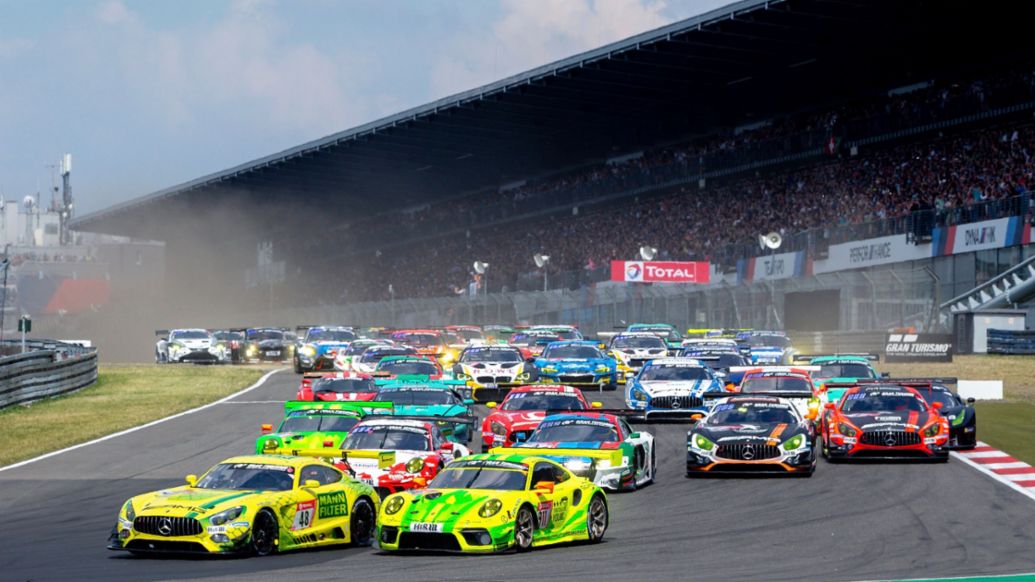
The race
The Nürburgring is one of the world’s most demanding and picturesque racetracks. The Eifel classic runs over a 25.378-kilometre combination of the Grand Prix circuit and the Nordschleife (northern loop). The infamous Nordschleife, which was given the intimidating name “Green Hell” by three-time Formula One World Champ Jackie Stewart, poses a real challenge for drivers with its rollercoaster layout, changing track surfaces, and many corners and crests. The fact that the race is contested by professional racers through to clubsport drivers makes the 24-hour marathon particularly appealing.
The Porsche customer teams
Porsche provides its customer teams Falken Motorsports, Frikadelli Racing, Huber Motorsport and KCMG with support in their Eifel campaign by contributing drivers from their own squad, among other things. Because of the above-mentioned Covid-19 situation, works drivers Earl Bamber, Mathieu Jaminet (France), Sven Müller and Dirk Werner (both Germany), as well as the two Porsche brand ambassadors Timo Bernhard and Jörg Bergmeister, will take the wheel of the Porsche 911 GT3 R. Frikadelli Racing have directly signed on Norbert Siedler (Austria).
An overview of the Porsche drivers (SP9 class)
KCMG (Porsche 911 GT3 R #18)
Earl Bamber, Jörg Bergmeister, Timo Bernhard, Dennis Olsen
KCMG (Porsche 911 GT3 R #19)
Josh Burdon (Australia), Edoardo Liberati (Italy), Alexandre Imperatori (Switzerland), Dennis Olsen
Huber Motorsport (Porsche 911 GT3 R #25)
Nico Menzel, Marco Holzer, Patrick Kolb (all Germany), Lorenzo Rocco di Torrepadula (Italy)
Frikadelli Racing Team (Porsche 911 GT3 R #30)
Klaus Abbelen, Alexander Müller, Robert Renauer (all Germany), Norbert Siedler (Austria)
Frikadelli Racing Team (Porsche 911 GT3 R #31)
Lance David Arnold, Lars Kern (both Germany), Mathieu Jaminet (France), Maxime Martin (Belgium)
Falken Motorsport (Porsche 911 GT3 R #33)
Christian Engelhart, Sven Müller, Dirk Werner (all Germany), Klaus Bachler (Austria)
Falken Motorsport (Porsche 911 GT3 R #44)
Klaus Bachler, Martin Ragginger (both Austria), Peter Dumbreck (Great Britain), Sven Müller
Nürburgring 24 Hours – all outright Porsche victories:
1976 Müller / Hechler / Quirin (Porsche 911 Carrera)
1977 Müller / Hechler (Porsche 911 Carrera)
1978 Müller / Hechler / Gschwendtner (Porsche 911 Carrera)
1988 Dören / Holup / Faubel (Porsche 911 Carrera RSR)
1993 de Azevedo / Konrad / Wirdheim / Katthöfer (Porsche 911 Carrera)
2000 Mayländer / Bartels / Alzen / Heger (Porsche 911 GT3 R)
2006 Luhr / Bernhard / Rockenfeller / Tiemann (Porsche 911 GT3 MR)
2007 Lieb / Bernhard / Dumas / Tiemann (Porsche 911 GT3 RSR)
2008 Lieb / Bernhard / Dumas / Tiemann (Porsche 911 GT3 RSR)
2009 Lieb / Bernhard / Dumas / Tiemann (Porsche 911 GT3 RSR)
2011 Lieb / Bernhard / Dumas / Luhr (Porsche 911 GT3 RSR)
2018 Lietz / Pilet / Makowiecki / Tandy (Porsche 911 GT3 R)
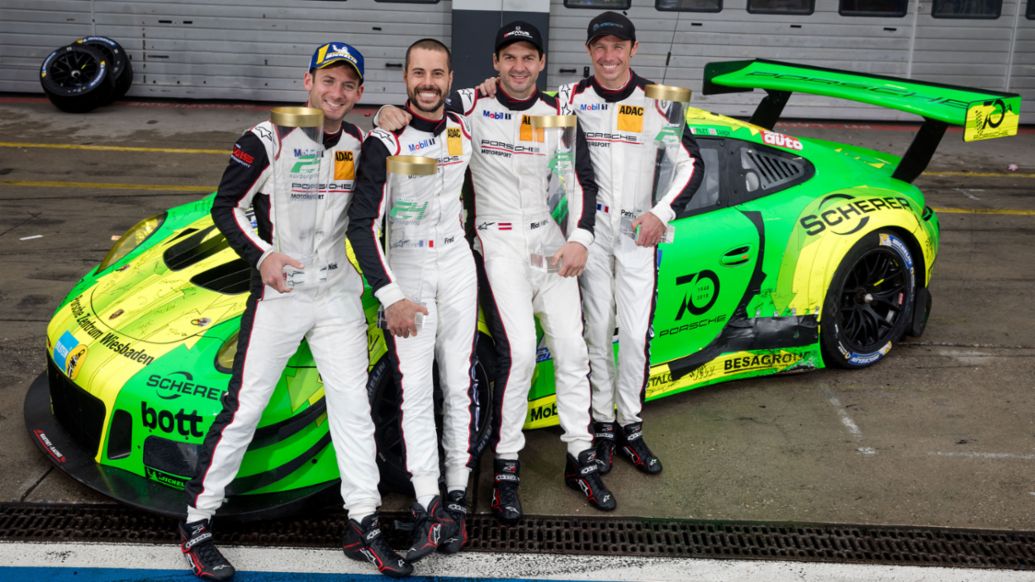
The schedule
Thursday, 24 September
12:30 – 02:00 pm: Qualifying 1
08:00 – 11:30 pm: Qualifying 2
Friday, 25 September
01:25 – 02:25 pm: Qualifying 3
05:50 – 08:10 pm: Top Qualifyin
Saturday, 26 September
11:15 am – 12:15 pm: Warm-up
03:30 pm: Start 48th Nürburgring 24 Hours
Sunday, 27 September
03:30 pm: Finish 48th Nürburgring 24 Hours
The event on TV and live stream
The Nürburgring 24-hour race gets underway at 3.30 pm on 26 September. The free-TV broadcaster RTL Nitro televises the Top Qualifying (25 September, from 6:15 pm) and the entire race live. The website www.24h-Rennen.de as well as many motorsport platforms offer free live-streaming of the Eifel classic.
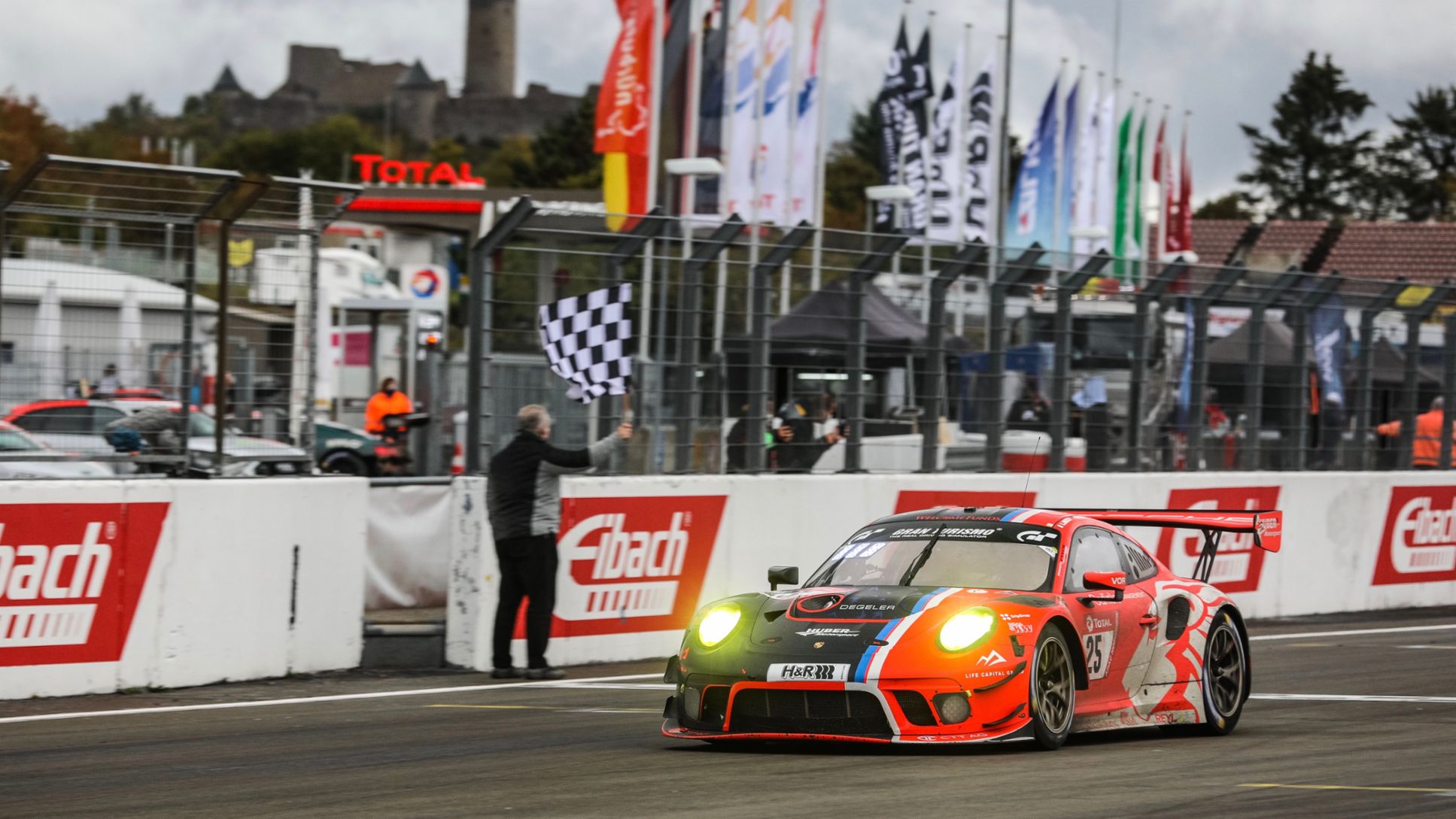
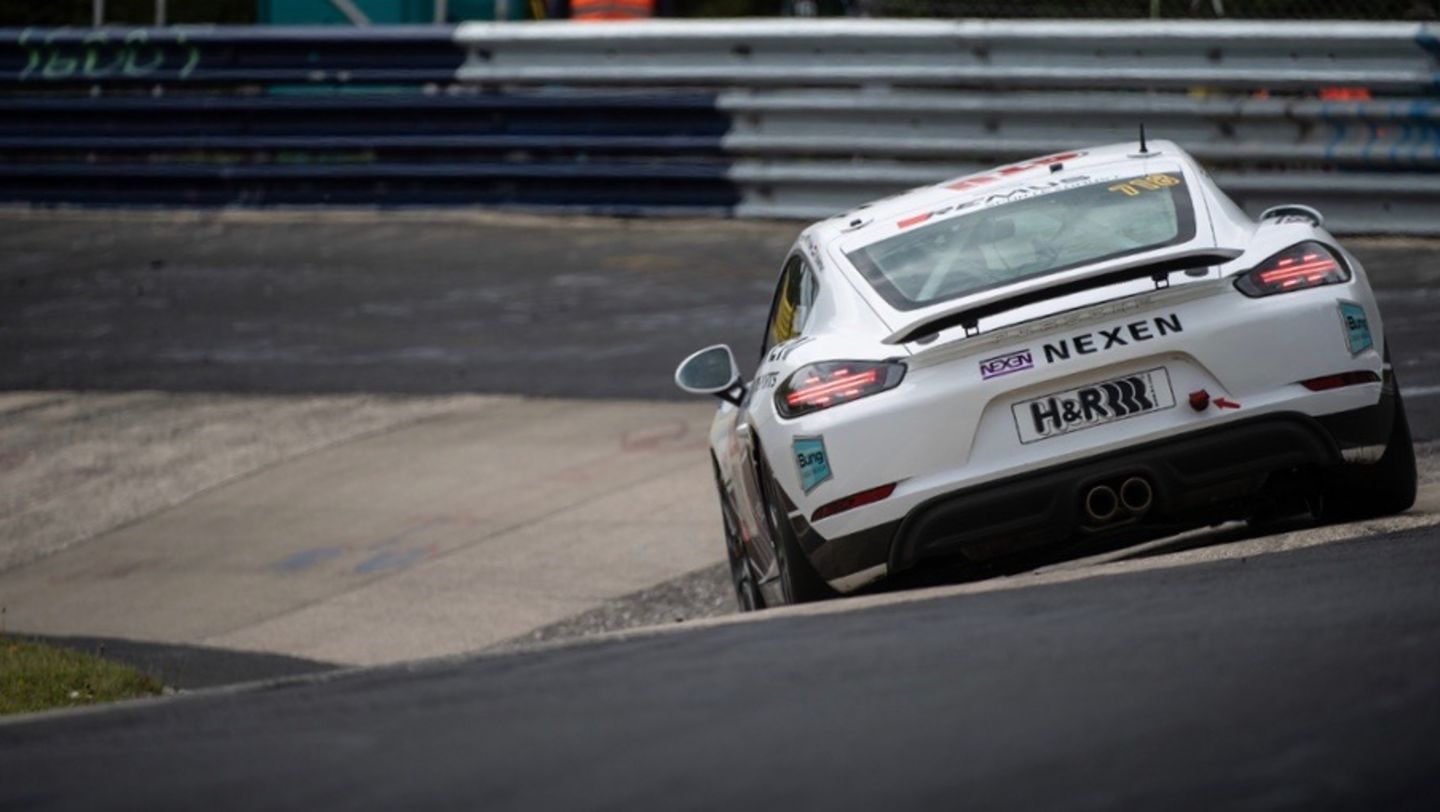
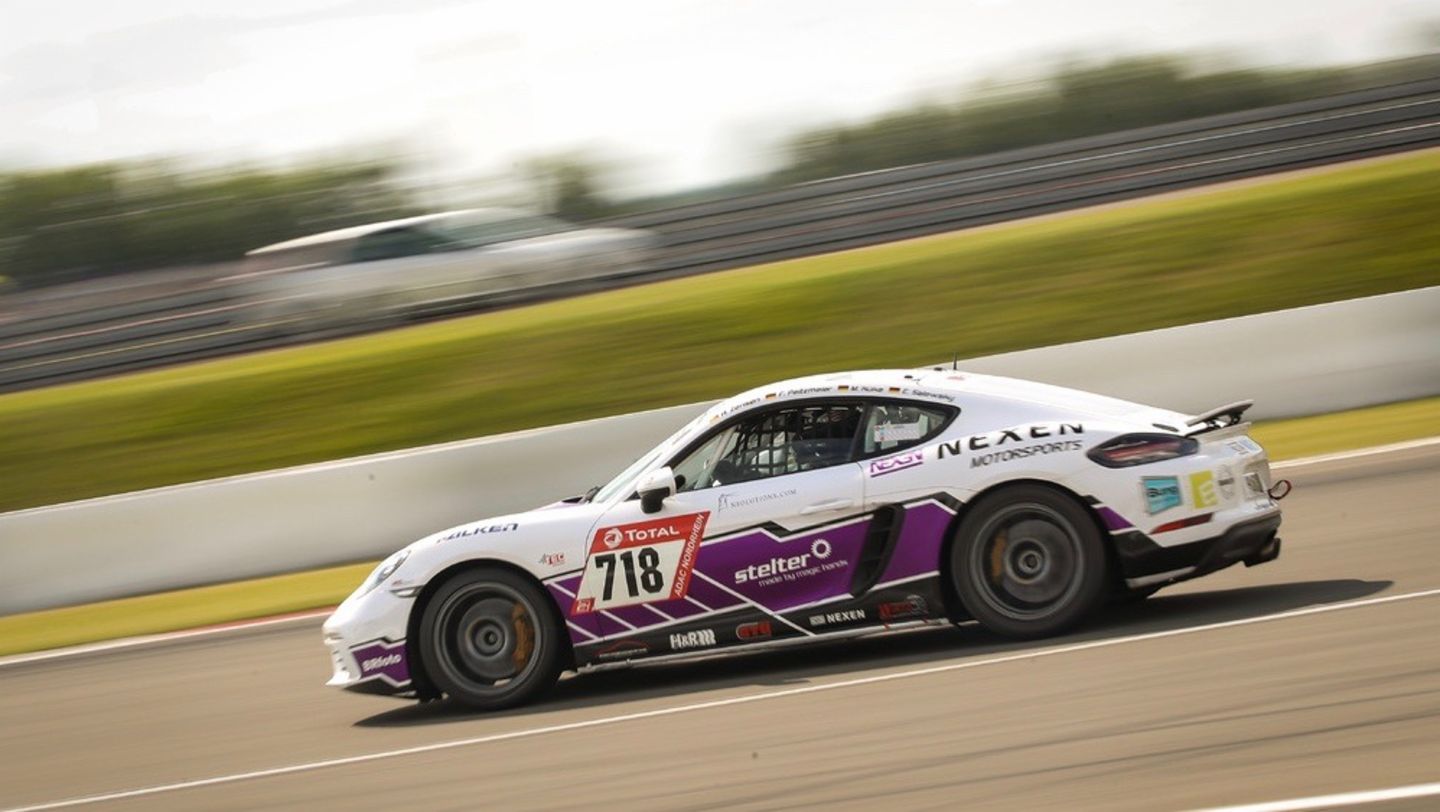
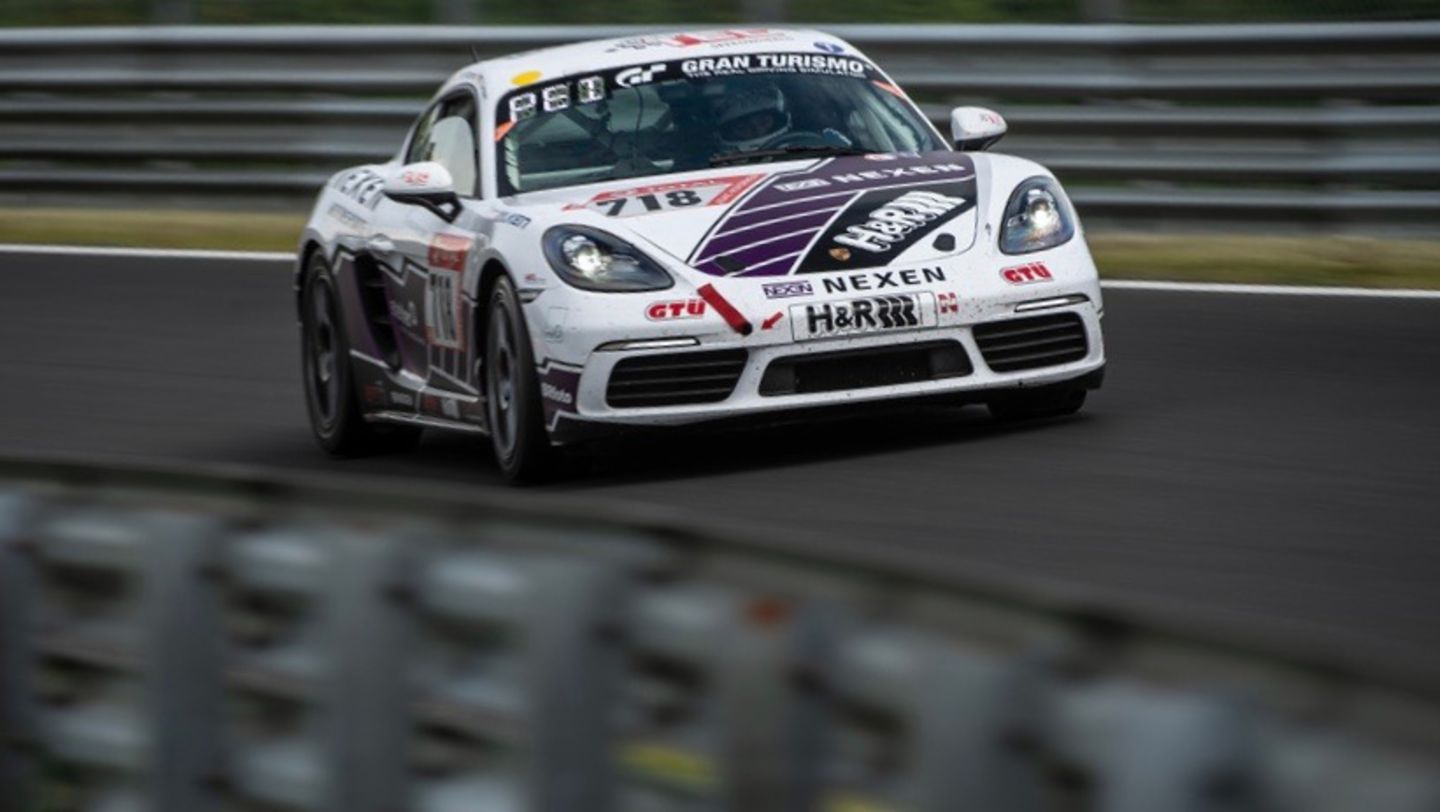
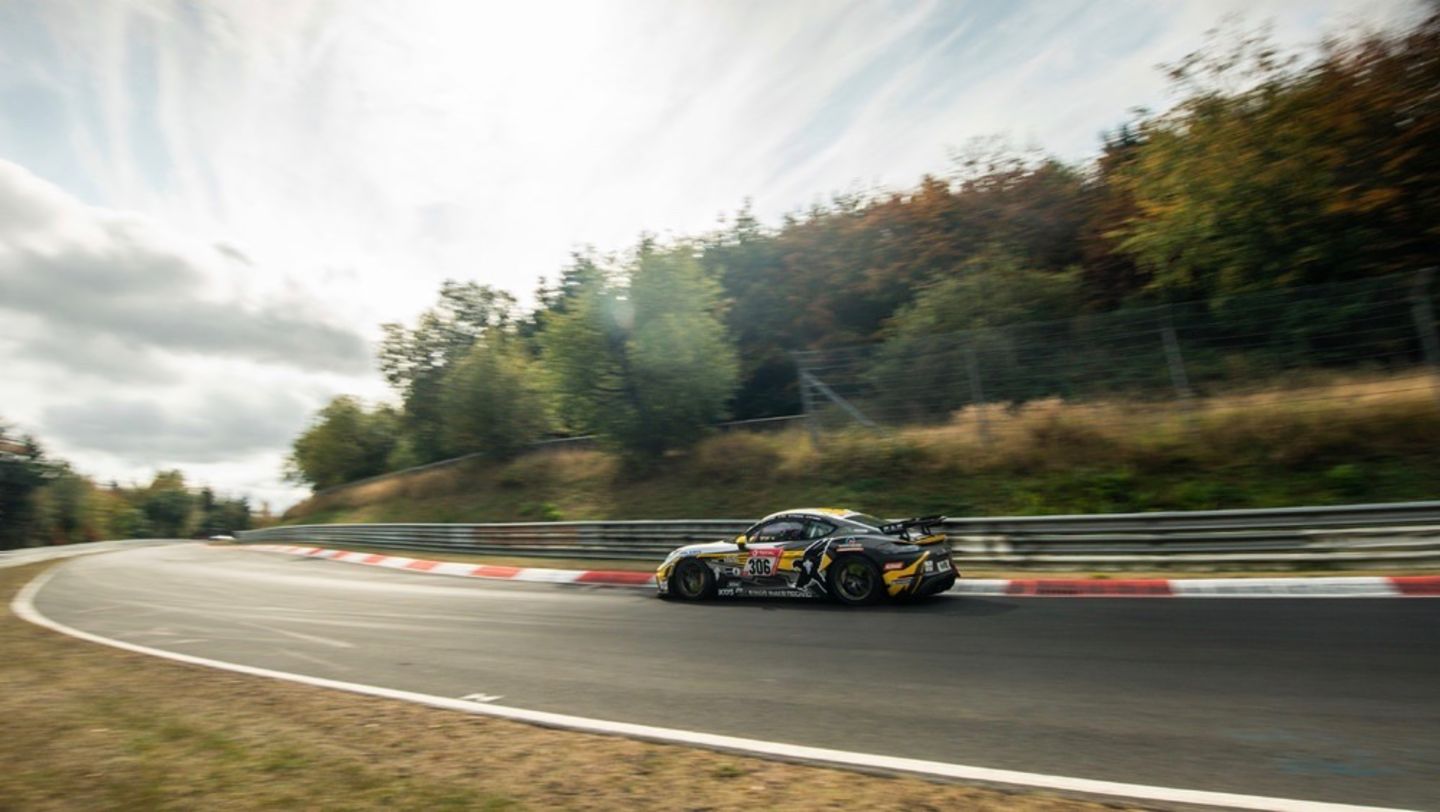
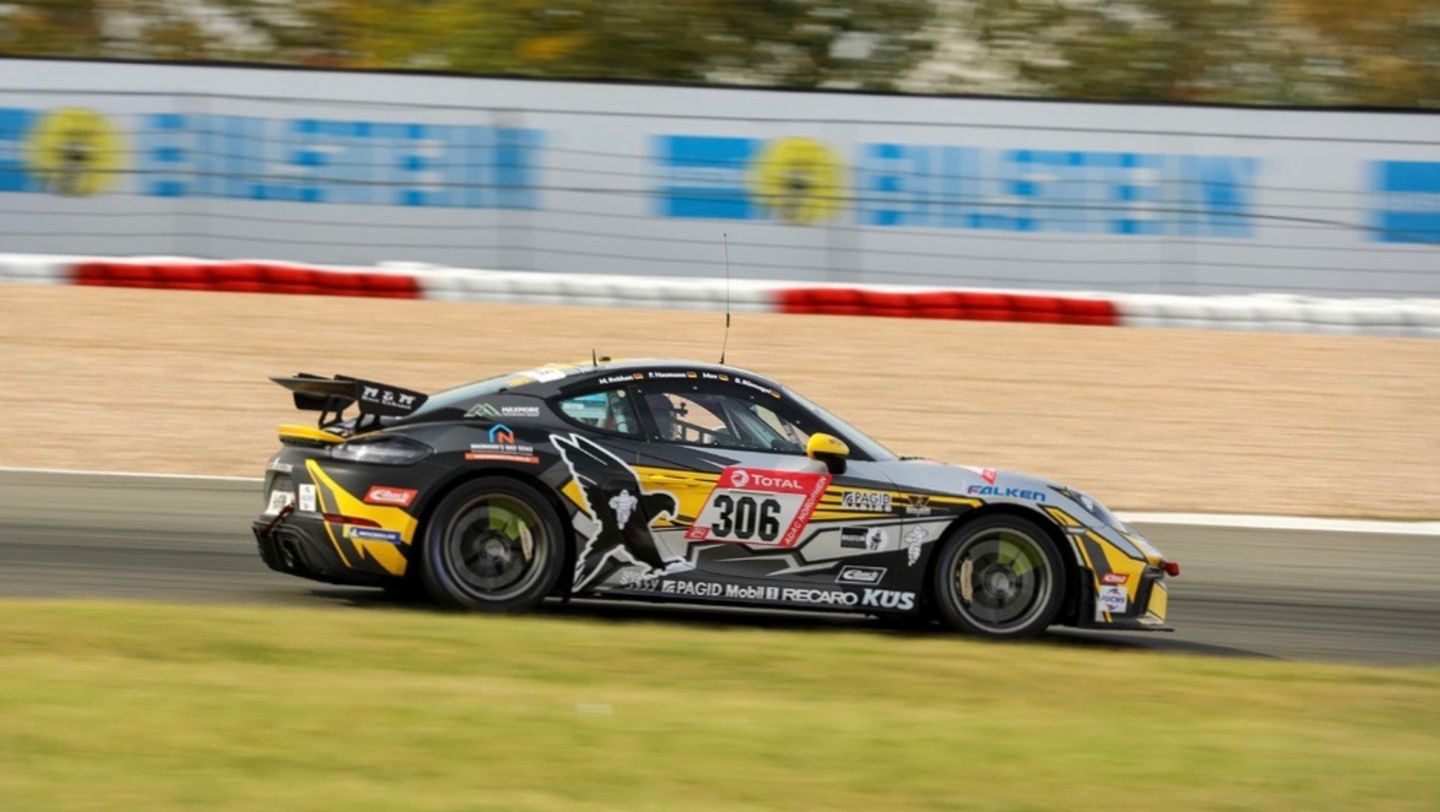
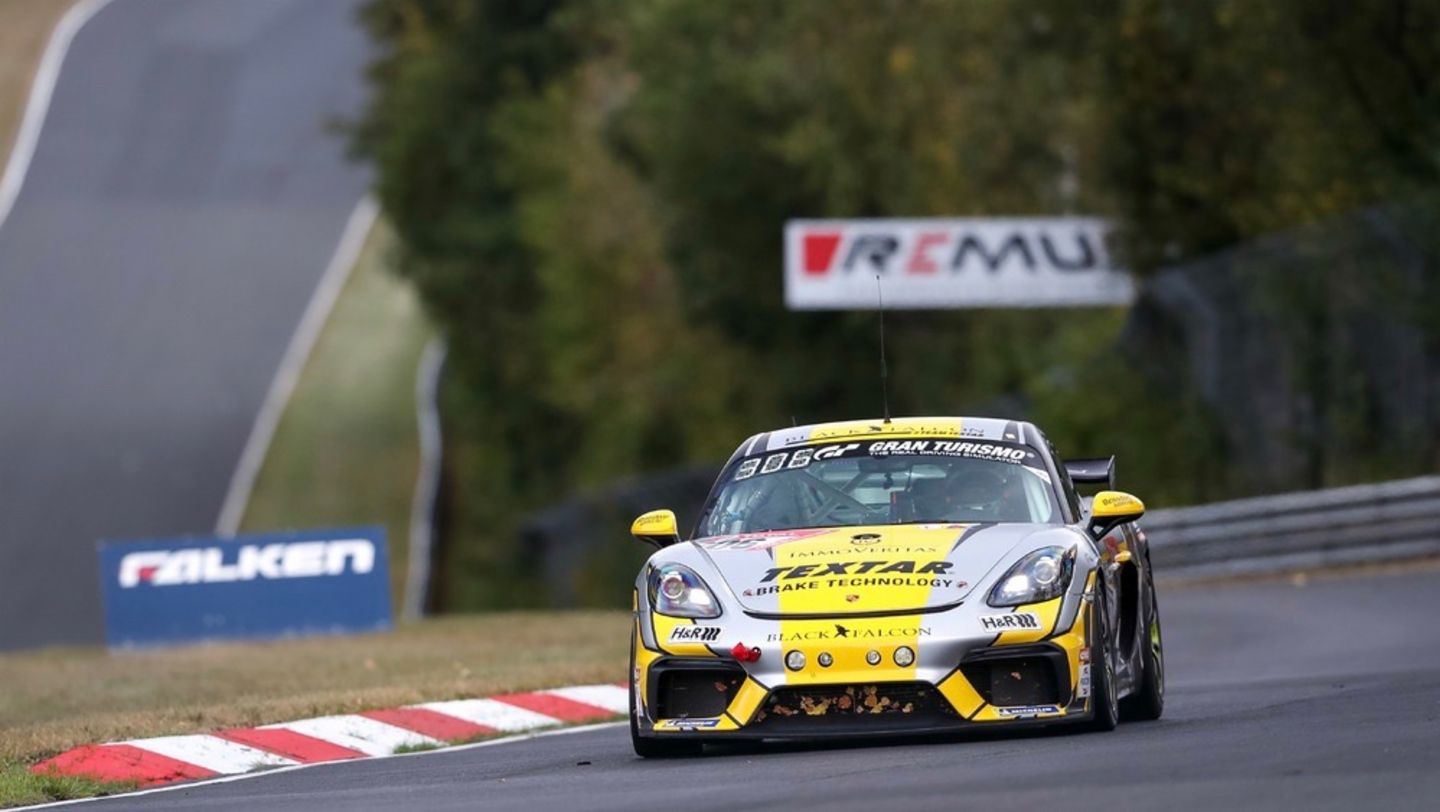
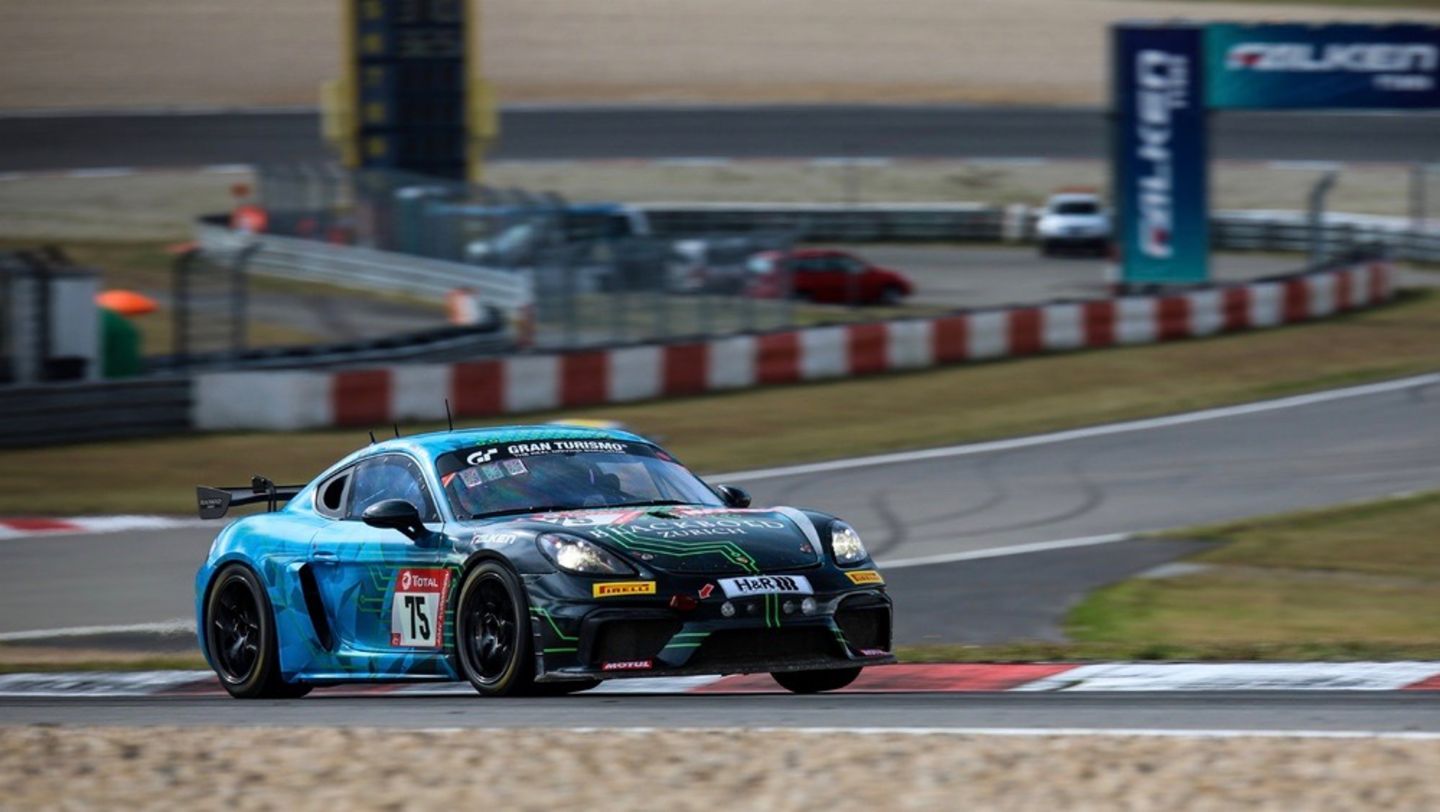
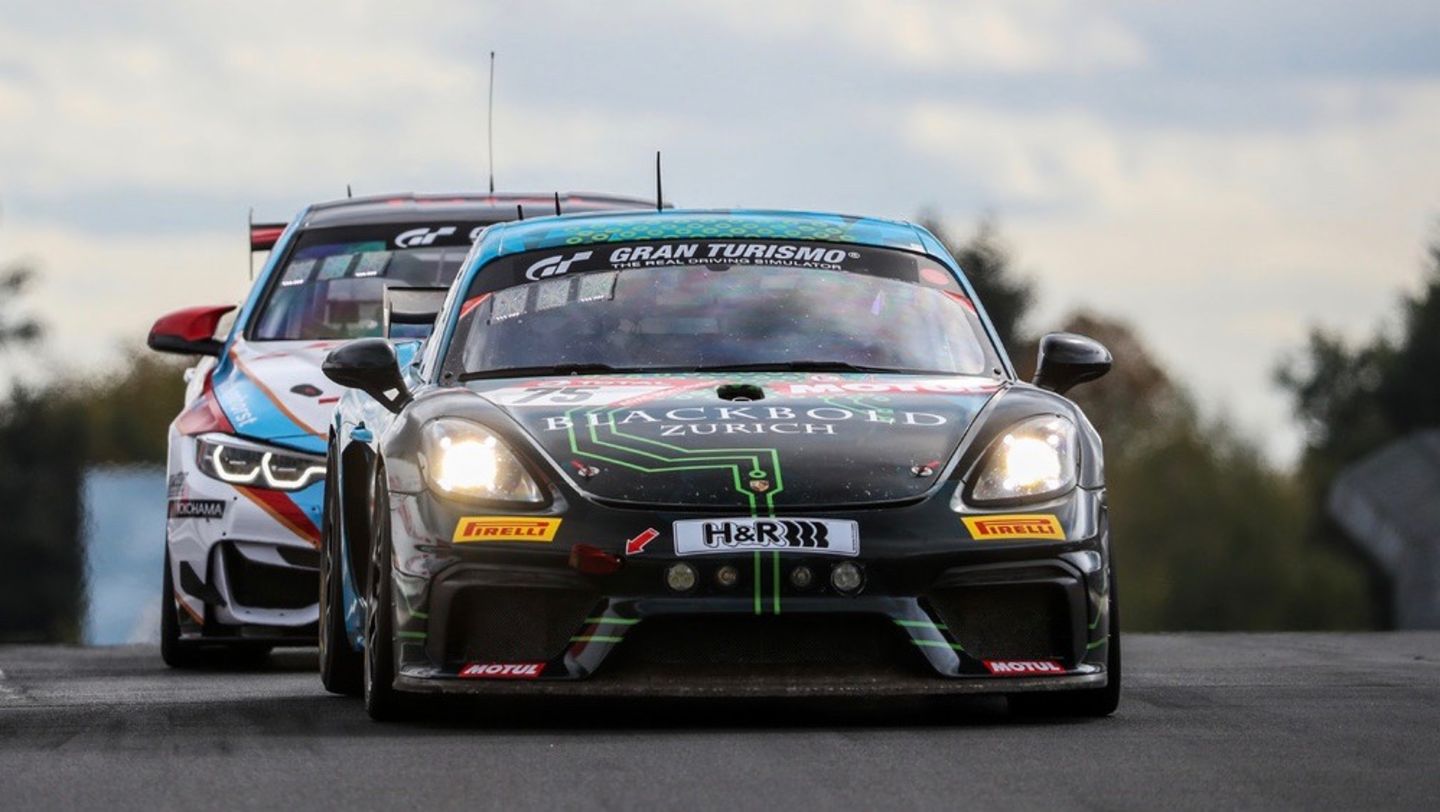
/M20_4170.jpeg/jcr:content/M20_4170.jpeg)
/M20_4171.jpeg/jcr:content/M20_4171.jpeg)
/M20_4172.jpeg/jcr:content/M20_4172.jpeg)
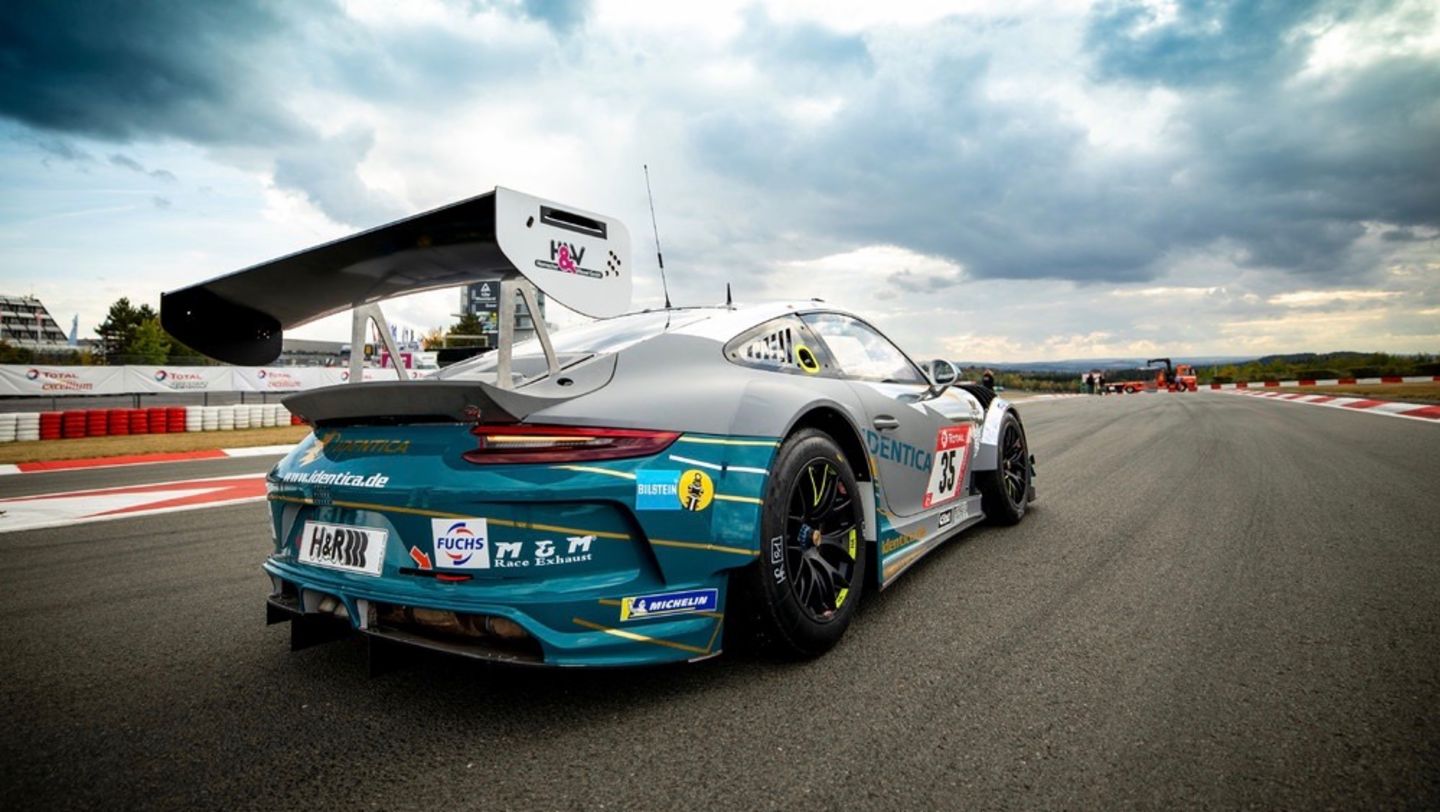
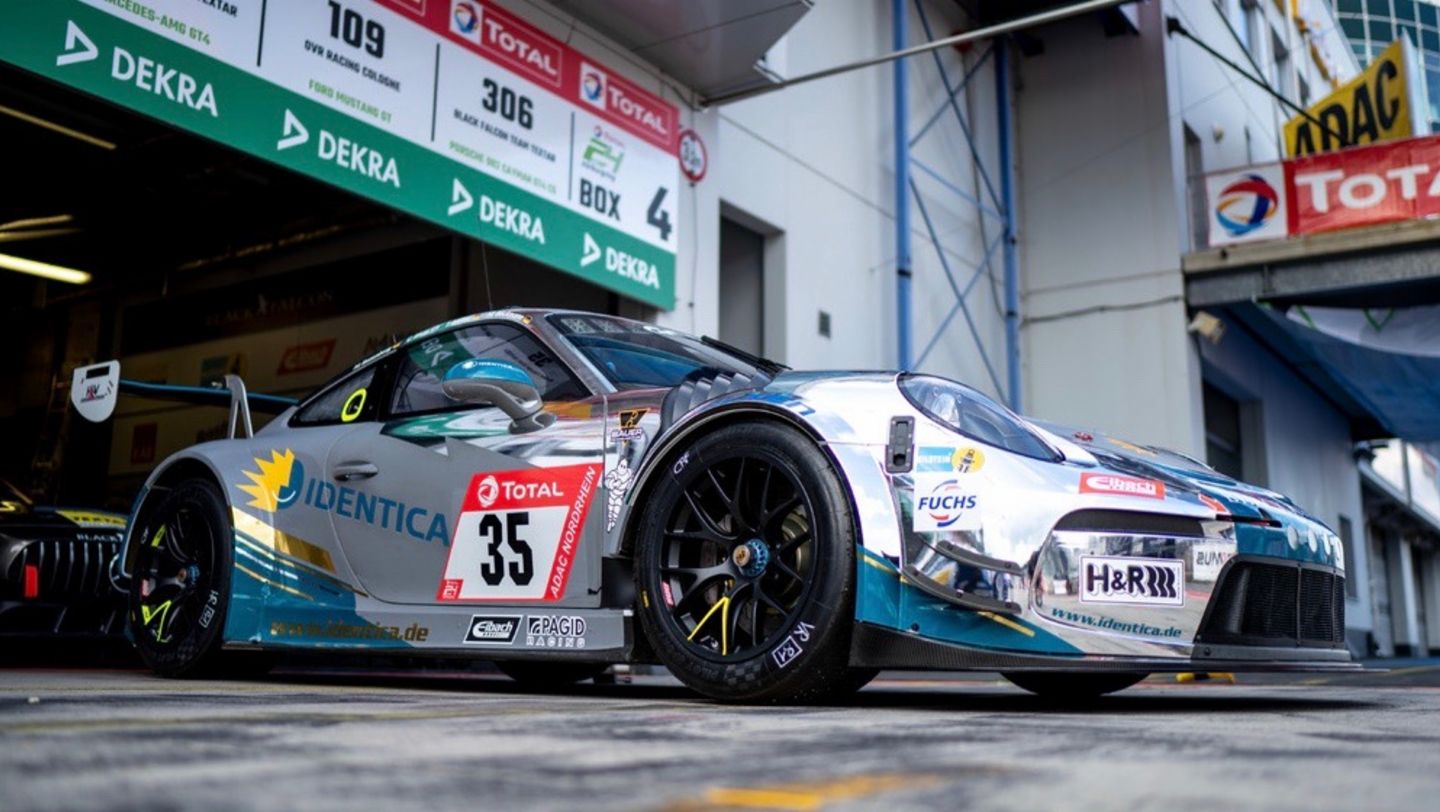
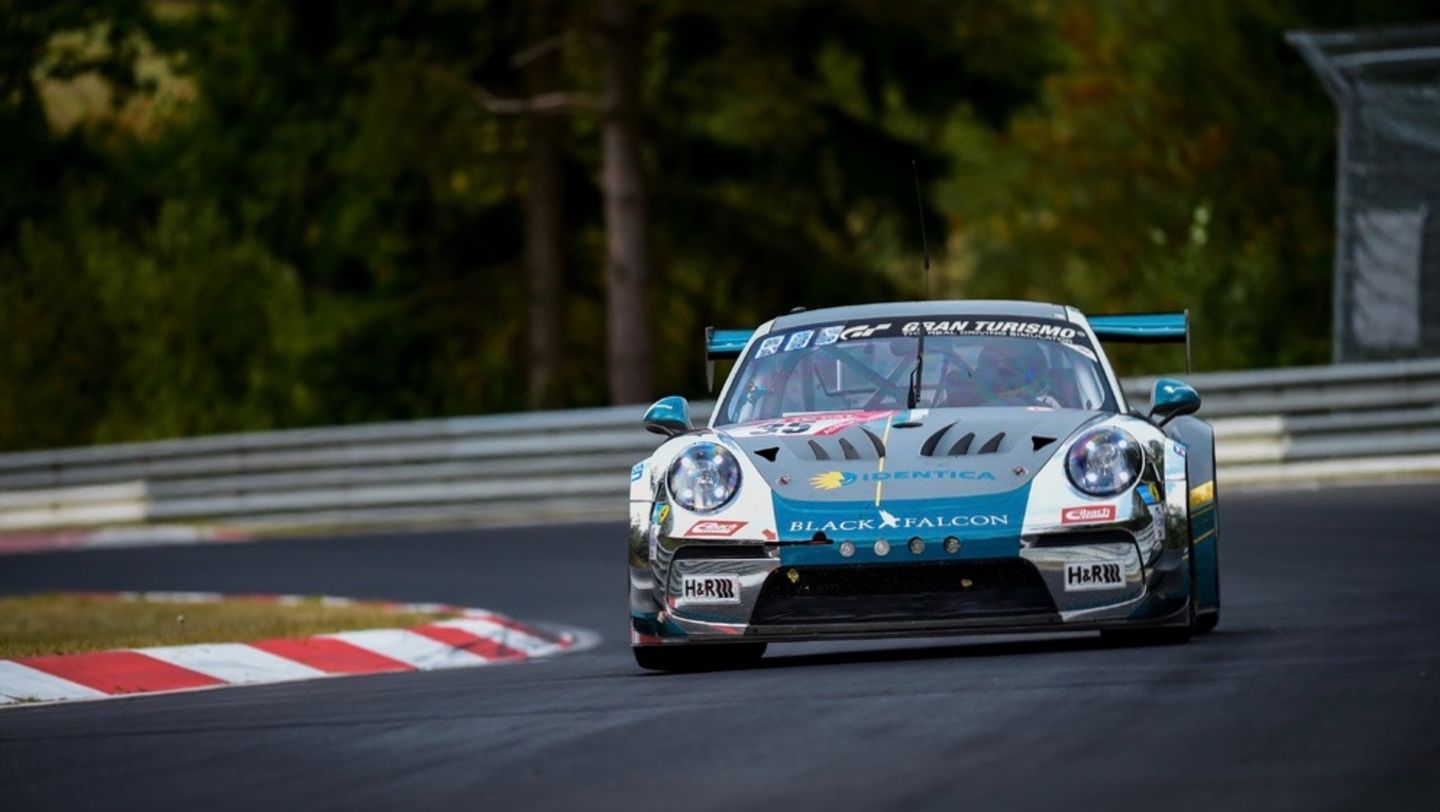
/M20_4181.jpeg/jcr:content/M20_4181.jpeg)
/M20_4176.jpeg/jcr:content/M20_4176.jpeg)
/M20_4182.jpeg/jcr:content/M20_4182.jpeg)


